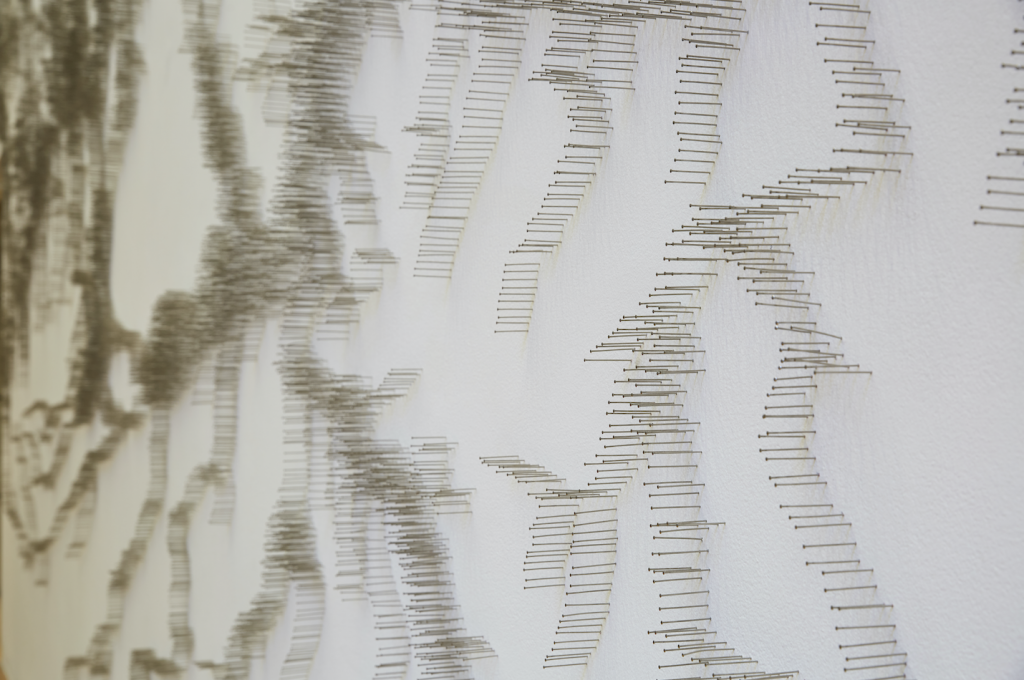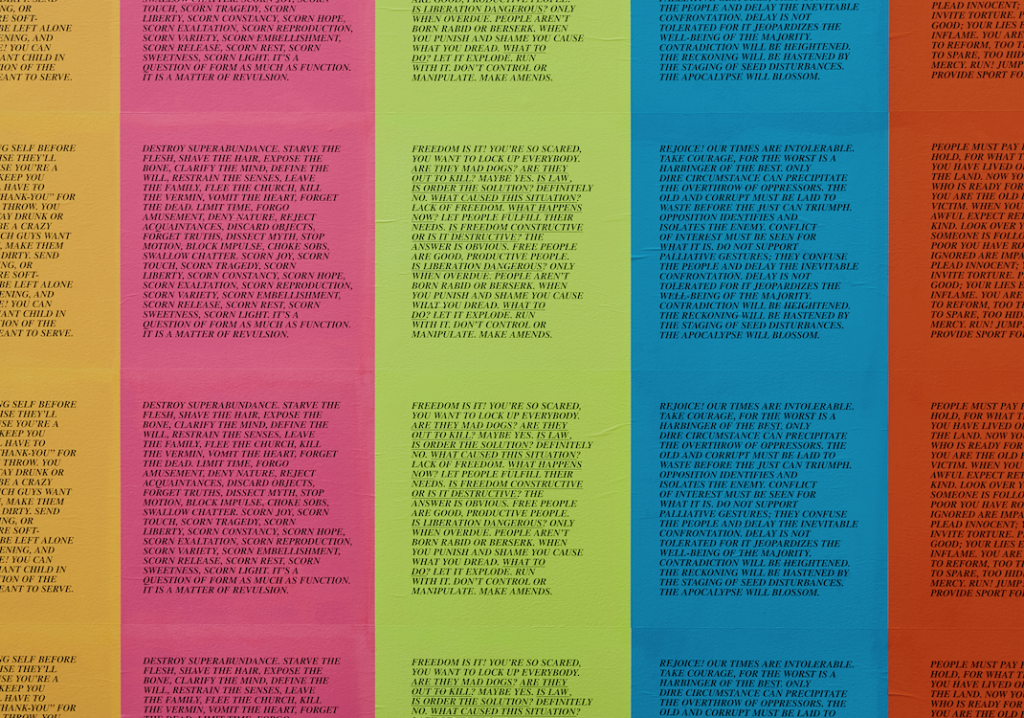Gallery Space: Maya Lin, Ann Hamilton and Jenny Holtzer: HERE

Visual artists Maya Lin, Ann Hamilton and Jenny Holtzer have respectively crafted world- renowned legacies that have brought them back to their native state. Challenging viewers with an intentional focus on Ohio’s constant adaptation, both environmental and ethical, each artist will make visceral connections with guests of HERE, an exhibition that brings together three significant Ohio artists whose work has stood the test of time, and who have finally come together for the first time.
“While I and others at the Wexner thought about an exhibition that featured other Ohio-born artists, these three just seemed to make sense, aesthetically and in terms of their ideas and their potential relationship to the galleries of the Wexner Center,” says HERE curator Michael Goodman. “I started to think about this place in terms of the Wexner’s 30 years. About that time, I saw a set of Jenny Holzer’s benches from 2017 at Art Basel in Switzerland. This work used language by the Polish WWII-era poet Anna Swir. I was really moved by them, and it occurred to me that Jenny was from Ohio and that a good portion of her career matched the Wexner’s 30-year lifespan to this point.”

Along with Holtzer, Goodman had aligned his sentiments with the works of Lin and Hamilton, thus spawning the aesthetical collaboration with The Wexner Center. While each artist has their own personal style that is imprinted in their art, they have an interdependence that has lasted throughout their careers.
“While there is some commonality in why these three artists think about and use materials, what has become more interesting is how the accumulation of materials seems to have, at least in part, come to define how they all thought about this exhibition and about the galleries of the Wexner Center,” says Goodman. “All three have literally accumulated massive amounts of their chosen materials—posters, language, glass marbles, map pins, images—to create immersive worlds for our patrons to think about and, hopefully, to carry away with them into their lives. As viewers walk into the Wexner galleries this fall, this will be immediately felt. I think the exhibition feels like a world, and also like the world.”
BROUGHT TO YOU BY
Specifically addressing Ohio’s environmental issues, Maya Lin’s nail installation Pin River: Ohio Aquifers will represent Ohio waterways. In tandem with another piece by Lin, a glass-beaded “map” of the 2017 flood between the Ohio and Wabash Rivers speaks to the impact of global warming. As an in-depth look into familiar home objects scattered across Ohio, Ann Hamilton’s on view placement will be on the walls of the Wexner Center overlooking Ohio State’s campus. Her project when an object reaches for your hand, is a collaborative effort with The Thompson Library, a meditation on the perception of objects, and how they’re ingrained in our lives. Engaged with themes of universal humanity, Jenny Holtzer’s direct immediacy of Truisms and Inflammatory Essays will surround viewers with verbal adhesives.
“Choosing the work for the exhibition was largely about these three artists doing what they have consistently done well—thinking about the emotional and physical engagement that views have to an exhibition space and applying these concerns to the Wexner’s spaces specifically and then doing so in terms of what they are thinking now,” Goodman says.

For those who are unfamiliar with Lin, Hamilton and Holtzer, the significance of their work will be instantly recognized upon entering HERE. As Goodman’s curation relied heavily on emotional and physical engagement, his focus also opened a conversation of female visibility in the art world.
“Simply put, women have been under- represented in museum exhibitions. I think everyone at the Wexner Center feels a responsibility to not continue this myopic way of thinking and working. These three artists— who really have played a substantial role in defining what contemporary art is—happen to be women,” says Goodman. “We are happy to recognize all they have done to shape the contours of how we think about art because women really have done so much of this work; most of it, actually, over the last 50 years or so.”
Formatively shaped by the metamorphosis of home, the art of HERE defies both time and space, foreshadowing inevitable environmental changes and its effect on the community’s spirit. “One cannot help but feel the weight of what [the artists] have contributed. The importance of what they have done can quite literally be felt as you enter these spaces,” says Goodman. “As you feel this, you also know the importance of the Wexner Center, what it has contributed to Columbus, Ohio and the world. In this regard, these three artists and their ideas are a perfect match to this place and this time.”
HERE will run at The Wexner Center for the Arts from September 21st to December 29th.
BROUGHT TO YOU BY




